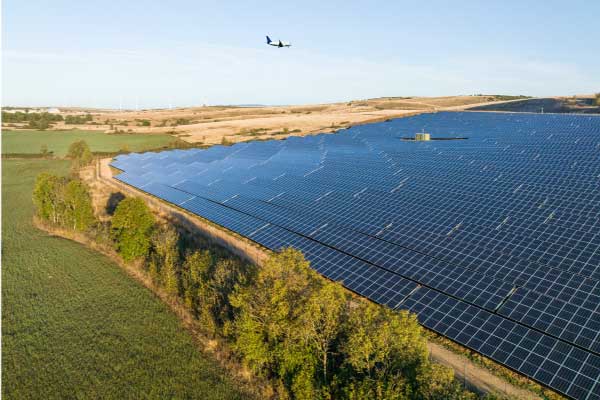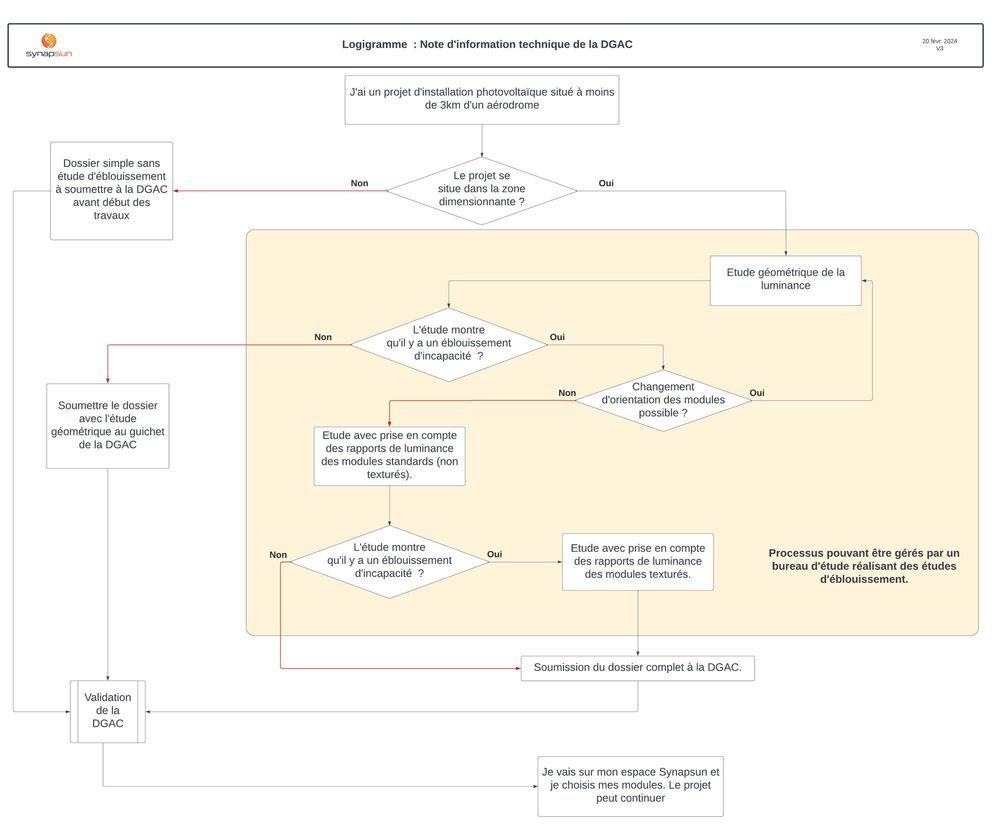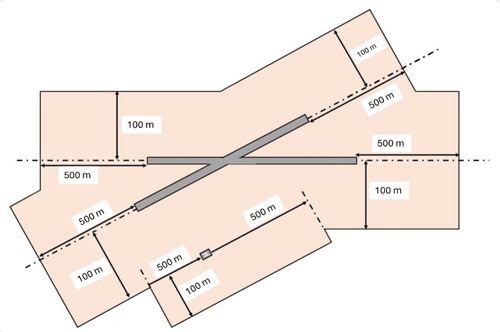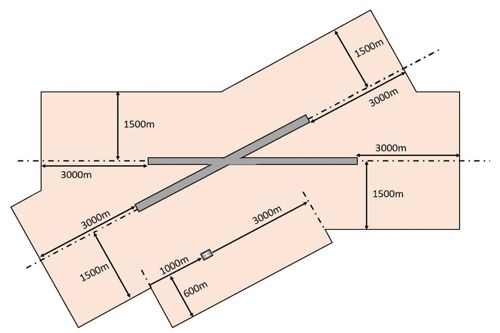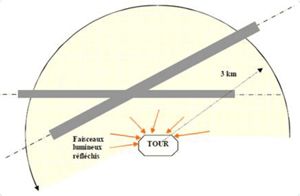New DGAC requirements for photovoltaic projects near airports
Evolutions concerning the development of photovoltaic projects near airports :
The context of DGAC requirements :
On 26/09/2022, the DGAC changed its requirements for photovoltaic projects near airports. The Technical Information Note (TIN) on this subject has been revised.
This revision removed the requirements for luminance levels of 10,000 and 20,000 candela per square metre (cd/m²), mainly due to the cessation of production of Saint-Gobain Albarino glass.
The note makes the project developer responsible for a full analysis of the project's potential glare, taking into account the position and inclination of the modules. The project must demonstrate "the absence of glare disability for pilots and ANSP personnel".
Depending on the characteristics of your project, a glare study will have to be carried out by a specialist design office, such as Solaïs.
Some definitions and vocabulary:
- Luminance: luminance is a physical quantity in cd/m² representing luminous intensity. It measures the luminous intensity perceived by the human eye, and is often used to describe the brightness of a surface or a light source.
- Disability glare: glare that causes a real physical impairment in perceiving people, objects or the surrounding environment.
Below is a flow chart to help you make the right decisions for your project.
What does the NIT require for the projects concerned?
For any project located less than 3 km from the aerodrome, the project developer must submit a file to the DGAC's Guichet unique before starting any work.
This application must :
- Comply with the requirements of the TIN.
- be approved by the DGAC before the work is carried out.
- Include at least the following elements:
- The characteristics of the installation: position, altitude, orientation, inclination, surface area.
- Proof of the absence of incapacitating glare for pilots or ANSP (Air Navigation Service Provider) personnel, depending on the location and surface area of the installation.
- A signed document (by the project leader or the associated design office) attesting to the absence of incapacitating glare for the personnel of the PSNA and pilots and specifying its commitment to implement any mitigation actions in the event of incapacitating glare observed after installation.
Here are the first points to look out for, to determine whether the project is within the dimensioning zone.
- Project area
- Project position
For projects with a surface area < 500m² (<100 kW)
- Length: 500 m before the landing threshold + length of runway available for landing + 500 m after the end of the runway;
- Width: 100 m on either side of the runway centreline or the width of the runway strip, whichever is more restrictive.
- No other dimensional zone.
For projects with a surface area > 500m² (>100 kW)
- Length: 3000 m upstream of the runway threshold + length of runway available for landing + 3000 m after the end of the runway
- Width: 1500 m on either side of the approach axis.
Area in the shape of a sector of a circle, comprising the traffic in the vicinity of the runways/FATOs, characterised by the following elements:
- Centre: the control tower; Radius: 3,000 m; Parallel to runways/FATOs passing through the tower.
